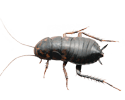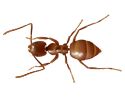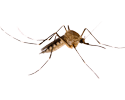What’s That Scratching Sound? What To Do about Houston’s Home Intruders

Raccoons and squirrels and rats, oh my! Let’s just say we’ve been getting a lot of requests from our customers this time of year for small wildlife and rodent problems. It’s not surprising either, as we’ve had an especially cold fall leading into winter. If you’ve heard stirrings in your attic or walls, be wary of some of these intruders and the damage they cause.
Common Houston Home Invaders
Roof rats: Roof rats are one of the most notorious pests, and we’ve definitely been feeling it this year. Roof rats have strong climbing abilities and are usually found in high places like trees and roofs (go figure). This ability allows them to easily find their way into the upper levels of homes and buildings.
Squirrels: Squirrels usually nest outdoors in trees, but will enter homes and other buildings looking for food and shelter. Once they find a hideout, they will build nests in attics, crawl spaces or within walls. Since you usually won’t see them, hearing noises in the walls are a strong indication of a squirrel problem or something else.
Raccoons: If you have a raccoon in your attic, you’ll know. Because of their larger size, they make more noise than a rat or squirrel. It may even sound like a grown adult is walking around. Yikes! Raccoons can find their way into homes through open vents, soffits, and even through pet doors. This isn’t as likely, though, as raccoons finding shelter in your attic.
Signs of Wildlife in Your Home
The most telltale sign of wildlife in your home is hearing unusual sounds in your walls, ceilings, attic and your chimney. In fact, you will probably never see them unless you take a closer look in these areas. If you do some more investigating, signs like droppings, urine stains and strange smells also point to an animal intruder.
Damage from Wildlife
While it seems obvious that you don’t want these nuisance pests in your home, their presence can indicate much larger, structural problems. Damaged shingles, gaps in vent covers and other cracks in your home exterior can invite wildlife indoors. Once they settle in, they can cause more damage by gnawing at insulation and electrical wires, creating a serious fire hazard. They can also be a health risk due to bacterial disease spread via droppings and urine.
What to Do (Prevention and Next Steps)
Making sure you have any gaps in the exterior of your home well sealed is a crucial step in preventing wildlife from coming indoors. You should also trim overhanging trees that may serve as a bridge from their natural habitat to your home. Because you never know what to expect with these pests and handling them can be dangerous, it is important to call in an expert. Not only does Holder’s Pest Solutions treat insects, we also are certified in wild animal removal and identification, and can even help seal up your home in some cases. If you’ve been repeatedly struggling with intruders, we can identify how they are getting in and why they are coming back. Contact us today for more information!
What’s That Scratching Sound Serving What To Do about Houston’s Home Intruders?
Houston
Beaumont | Conroe | Spring | Pasadena | The Woodlands | Richmond | Galveston
Baytown | Bryan | Cleveland | College Station | Cypress | Pearland | Sugar Land
Home » What’s That Scratching Sound? What To Do about Houston’s Home Intruders




